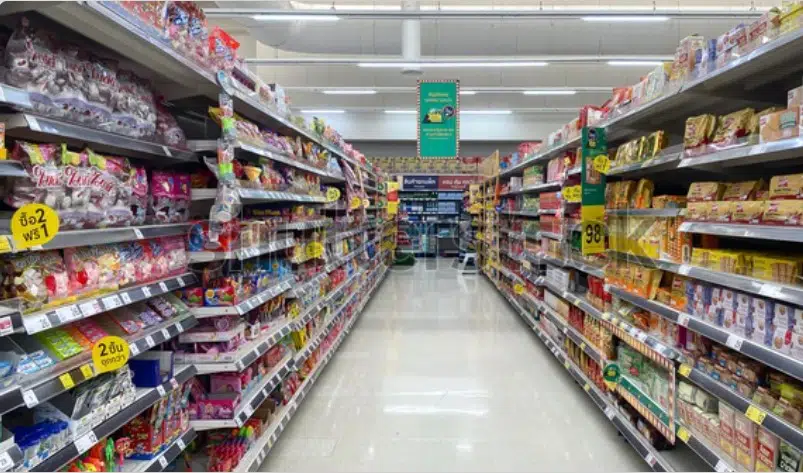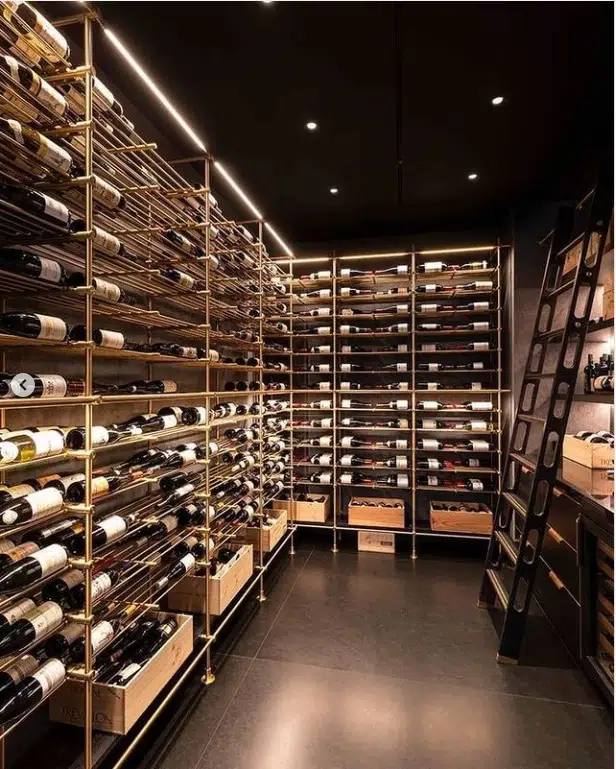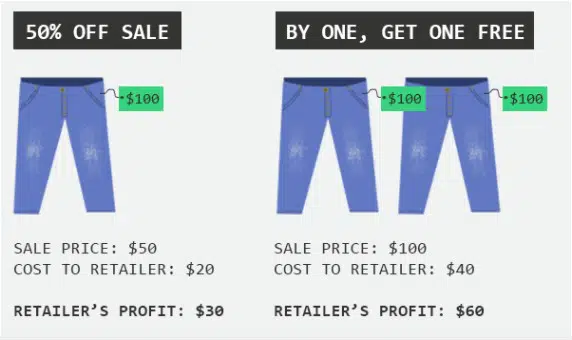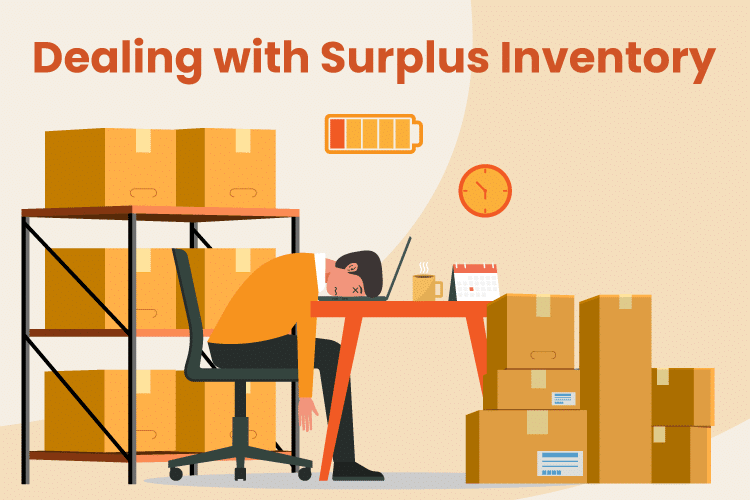
One of the most common challenges retailers experience is surplus inventory also referred to as overstocking. The most immediate and visible impact of surplus inventory is the cost of storage and space. This results in lost revenue that can be difficult to recoup, as the need to expedite the sale of overstocked products often requires more time and energy, higher markdowns, and more expenses.
In addition, overstocking products ties up money. Therefore, your investment will not be recovered until the products are sold. This can become a predicament if you don’t have the funds to replace overstocked merchandise with new products and prevent the release of profitable products.
Eliminating excess inventory is key to maximizing profits over any other resource investment that ultimately results in a loss. While overstock problems are sometimes caused by factors you can’t control, such as a sudden change in consumer preference trends or demand forecasts that didn’t turn out the way you wanted, there are ways to get rid of your excess inventory. This blog will show you six surefire ways to dispose of your surplus inventory.
6 Ways to Dispose of Surplus Inventory
1. Remarketing of Products
One of the most effective ways to get rid of products or items that unnecessarily use space is to remarket them. Sometimes when a product is not generating enough sales, it may not be due to its quality but rather the way you market or position the merchandise in your retail store. It is possible to remarket products without much difficulty. One thing you can do, for example, is to shift the overstocking products to a more visible location.

You can also rearrange the layout of your store’s products by placing the surplus inventory in much brighter areas, either right at the store’s entrance or changing the layout of the shelves so that they are more accessible to pedestrians. Changing the position is a great way to freshen up your merchandise, which will likely generate more demand and sales.
You can even display these products with trendy items and materials with saleable items to generate more customer demand. This strategy aims to get the consumer to accept the product in a different way than they might not otherwise enjoy.
2. Use Clearance Sales as an Option
Leveraging clearance sales are among the best inventory liquidation strategies for overstock products. This strategy displays overstock products by offering consumers a small discount on each purchase.
You can start with 40% off these products. The offer can gradually increase to 60% – 80% to entice shoppers. Your customers will be much more willing to buy your store’s clearance products at a discounted price because your signage has already prepared them for the store’s clearance sale.
Clearance sales are a great way to get rid of excess inventory from the shelves without hurting the business and making a good chunk of profit that will reflect on the positive side of the balance sheets. Clearance sales are not just for physical stores. You can also display them on your website and social media platforms like Facebook, Instagram, or even TikTok.
3. Sell Your Excess Inventory to Liquidation Companies
Liquidation companies buy back products that other companies cannot sell at meager prices and then resell them under their brand. This means you will sell your unwanted products at lower prices than you bought from your original supplier. You will lose some margin, but that’s the price you pay to free up space in your store.
There are many websites where you can quickly sell off your surplus inventory. Here is an example of some websites you may want to consider if you want to use a liquidator:
- LiquidateNow
- AAA Closeout Liquidators
- B Stock Supply
- SELL Inventory.com
- Product Liquidators.com
- Kole Imports
- Merchandise U.S.A
- BoxFox
- Liquidation.com
- 360 Components
- J2 Sourcing
- Computer components
Alternatively, you may consider returning the products to your vendor or supplier while accepting a loss of margin if the vendor agrees or is legally obligated to do so.
4. Use Bundled Items And Incentives
Bundling is also considered one of the best inventory liquidation strategies. It consists of grouping popular products that sell better with overstock products to entice your store’s customers to choose the bundle over regular items or grouping special edition items with regular items for vacation promotions.

Following the same logic as bundling, you can select items or products you will sell as gifts or incentives to customers after they purchase over a certain amount. For example, offering products as incentives after purchase of more than $150 or $250 will encourage customers to buy more regular-priced items and spend a little more than usual to receive an exclusive gift.
This strategy will help you sell excess inventory faster while increasing average sales. Extra inventory can also be used as prizes in in-store and online contests. You can organize a contest in your store or on your social media accounts and choose this excess inventory as a reward to offer to your customers. It will free you from overstocking, drive buzz around your brand, and serve as a marketing campaign for other products.
5. Sell Your Overstock Products On Online Marketplaces
Another great way to reduce your surplus inventory is to sell items on eCommerce sites like Amazon, eBay, or Etsy. However, it’ll take a little longer to sell out as you will have to create product pages, photograph each item, and market each item according to the rules and expenses of each platform.
Still, these sites could be great ways to help you sell your excess inventory, as they account for the largest share of online purchases worldwide. Here’s what you need to know about each platform before you consider selling your surplus inventory there:
Amazon
Before you start selling products on Amazon, you must choose the sales plan that suits you. There are two plans: An individual plan and a professional plan. The individual plan costs $0.99 per unit sold (up to 40 units sold per month). The professional plan costs $39.99 monthly, regardless of the number of items you sell.
Also, before you sign up with Amazon, be aware that you will have to pay additional seller expenses. For each item you sell, Amazon will charge you a referral fee. Generally, most referral fees are between 8% and 15% of the sale and depend on the type of products you consider selling. In addition, if you also want to take advantage of Amazon’s FBA services, you will also be charged a fulfillment expense representing the cost of shipping your orders. Some additional selling expenses may be added if you use other optional programs to boost your sales of overstock products.
eBay
eBay is one of the largest online market platforms in the world, with over 180 million active buyers each year. To sell on its platform, eBay offers two options to vendors.
The first option is to purchase a monthly subscription for your store. For this first option, there are four plans or formulas: the starter plan, the basic plan, the premium plan, and the anchor plan. Each platform allows you to list as many ads as your chosen plan allows you to sell your excess inventory.
The second option is to become a seller without a plan. This option allows the seller to list products for sale and pay an insertion/listing fee of $0.35 per product. You pay this fee when you sell more than 200 products.
For each sale made, whether you have a sales plan or not, you have to pay an average commission of 10%. So having a selling plan can be a better and cheaper alternative for selling on eBay in the long run.
Etsy
Like Amazon and eBay, Etsy is also one of the largest marketplaces in the world, with most sellers being college women in their 20s and 30s. If you consider selling your overstock products on Etsy, you’ll be charged a 20-cent listing expense. Etsy charges you a 3.5% expense on every sale you make.
6. Plan to Offer BOGO or Multiple Purchase Discounts

As a retail business owner, you probably know this phrase that wields the power of a thousand salespeople: “Buy One, Get One Free.” For retailers, BOGO offers are extremely effective as a surefire way to profitably liquidate poor quality or surplus inventory.
A multi-buy offer is a sales promotion strategy that gets customers to buy products at a reduced price if they buy a certain quantity of the product or a certain amount. BOGOs are a great sales promotion to sell seasonal items when their season ends, such as selling snow shovels in the spring or lawn furniture, bathing suits in the fall, pool toys, etc.
BOGO offers are also very effective for grocery store owners. If a large portion of the perishable goods are not sold, this sales promotion strategy is the best to entice consumers to buy more and allow you to get rid of your excess inventory.
Here’s an example of a multi-buy promotion in action from baby clothing retailer Leo+Zo.

How to Avoid Having Surplus Inventory?
While there are some unavoidable factors that can cause overstocking in your stores, there are also some practices that contribute to excess inventory, such as placing orders blindly without knowing your store’s inventory. Avoiding overstocks and stock-outs comes down to inventory planning. You can minimize the risk of overstocking and limit its impact on your business by accurately forecasting demand using point of sale data and customer behavior information. Here are three practical tips you can follow to reduce your risk of overstocking.
1. Invest in an Automated Retail Inventory Management Software
Using spreadsheets or other manual methods for inventory management is out of the window. It is imperative to use inventory management software that can do much of the tracking, analysis, and calculations to minimize errors and order the right quantity of inventory needed from your suppliers for the smooth running of the store.
An inventory management software allows you to
- Contact your suppliers in time so that you are never out of stock. For you, it means more sales and satisfied customers, especially during sales periods.
- Adapt production to actual needs. This way, you don’t have products stored for long periods: you gain space that you can use for more saleable or more valuable products.
- Save money by better managing the expiration dates of certain products.
According to a report, nearly half of small businesses do not have good inventory and asset management practices. About 43 percent use manual tracking methods or do not track inventory at all. Make sure you’re no longer part of this batch.
When evaluating inventory management systems, think about the key performance indicators and metrics you want to start tracking. Make sure the inventory management software you choose aligns with your goals to provide a scalable solution for your business. While assessing options, consider the inventory management software cost to ensure it fits within your budget without compromising essential features. For example,
KORONA POS is an inventory management software perfectly designed for retail businesses and is cloud-based. This feature enables you to keep track of your inventory even when away from your store.
2. Track Your Sales With a POS System
Your POS system is the lifeblood of your retail store. It makes it easy for customers to pay within your store. It contains all your sales data, manages POS inventory software, and processes transactions. Make sure you have a POS system that tracks the most valuable data to help you make purchasing decisions.
The POS system you choose should allow you to quickly access information such as customer profiles, type of sales, product categories, remaining quantities, product checkout alerts, and notifications in case you’re running out of stock. Using a retail POS system like KORONA POS, capable of tracking sales and customer information, is what you need to eliminate purchasing uncertainty.
3. Leverage Retail ABC analysis
ABC analysis is an inventory management technique that determines the value of inventory items based on their importance to the business. ABC ranks products based on demand, cost, and risk data, and inventory managers group products into categories based on these criteria. This strategy allows retail or SMB owners to know what products or services work best for their business.
- Category A items are the most profitable and have the highest sales volume. These products are the heart of your sales and replenishment and have the most impact on your inventory count cycle.
- Category B products are of medium priority. They sell, but not as regularly as Category A products.
- Category C products are the least important and have a lower demand. They are often stocked in large quantities to avoid frequent replenishment.
Product prioritization is a great way to optimize your storage space and know what to prioritize when buying wholesale from your suppliers. This strategy lets you know that category A products should be the most prioritized when ordering inventory.
Inventory management headache?
KORONA POS makes stock control easy. Automate tasks and get a clear picture of your entire inventory.
Wrap Up
Overstocking or surplus inventory is a recurring situation in the retail industry. However, there are several ways to get rid of it without jeopardizing your business. The key to effective inventory management that avoids overstocking is to take advantage of inventory management software to help you streamline your inventory and make smart decisions regarding purchasing from suppliers.












